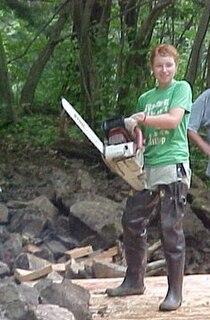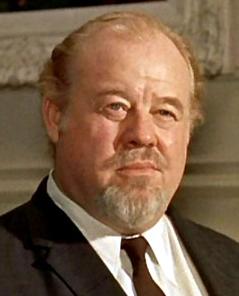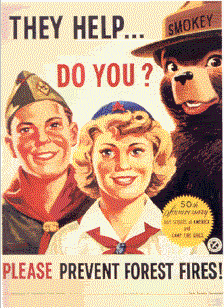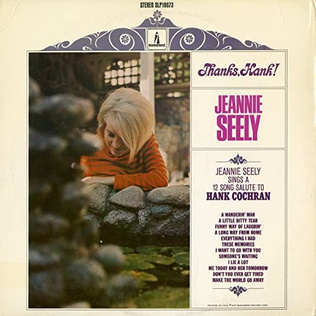
Scouting in Pennsylvania has a long and rich tradition, from 1908 to the present day, serving thousands of youth in programs that suit the environment in which they live.

Burl Icle Ivanhoe Ives was an American musician, actor, and author with a career that spanned more than six decades.

The World Scout Jamboree is a Scouting jamboree of the World Organization of the Scout Movement, typically attended by several tens of thousands of Scouts from around the world, aged 14 to 17.

The National Scout jamboree is a gathering, or jamboree, of thousands of members of the Boy Scouts of America, usually held every four years and organized by the National Council of the Boy Scouts of America. Referred to as "the Jamboree", "Jambo", or NSJ, Scouts from all over the nation and world have the opportunity to attend. They are considered to be one of several unique experiences that the Boy Scouts of America offers. The first jamboree was scheduled to be held in 1935 in Washington, D.C. to celebrate the 25th anniversary of Scouting, but was delayed two years after being cancelled due to a polio outbreak. The 1937 jamboree in Washington attracted 25,000 Scouts, who camped around the Washington Monument and Tidal Basin. The event was covered extensively by national media and attended by President Franklin D. Roosevelt.

William Hillcourt, known within the Scouting movement as "Green Bar Bill", was an influential leader in the Boy Scouts of America (BSA) organization from 1927 to 1992. Hillcourt was a prolific writer and teacher in the areas of woodcraft, troop and patrol structure, and training; his written works include three editions of the BSA's official Boy Scout Handbook, with over 12.6 million copies printed, other Scouting-related books and numerous magazine articles. Hillcourt developed and promoted the American adaptation of the Wood Badge adult Scout leader training program.

Arthur Aloys Schuck was a long time professional Scouter of the Boy Scouts of America (BSA) who served as the Chief Scout Executive for twelve years from 1948 to 1960.

James Edward West was a lawyer and an advocate of children's rights, who became the first professional Executive Secretary, soon renamed Chief Scout Executive, of the Boy Scouts of America (BSA), serving from 1911 to 1943. Upon his retirement from the BSA, West was given the title of Chief Scout.
Lone Scouts of America (LSA) was a Scouting organization for American boys that operated from 1915 until it merged with the Boy Scouts of America (BSA) in 1924. The LSA was founded by W. D. Boyce, publisher of the Chicago Ledger and the Saturday Blade and one of the founders of the BSA. Boyce felt that the program of the BSA did not help the rural boy who could not find enough other boys to form a troop or a patrol. James E. West, the first Chief Scout Executive of the BSA, disagreed with Boyce's concept, believing that the 4-H program was fulfilling the role. After Boyce left the BSA, he started the Lone Scouts of America and incorporated it on January 9, 1915. Boyce became the executive officer or Chief Totem and Frank Allan Morgan became the editor of The Lone Scout. In October 1915, Boyce appointed all of his paperboys as members of the LSA and published the first issue of The Lone Scout magazine.

Since Scouting began in 1907, it has entered into many elements of popular culture, including movies, TV and books.

The Versatile Burl Ives! is a 1961 album by Burl Ives, containing his hit single "A Little Bitty Tear." The album reached No. 35 on Billboard's 1962 Pop Album Chart. In the same year, "A Little Bitty Tear" climbed to No. 1 on Billboard's Adult Contemporary Chart, No. 2 on the Country Singles Chart, and No. 9 on the Pop Singles Chart. The pop, country, and folk songs on this album were selected to highlight the folk singer's versatility. Some of his performances, such as his cover of Johnny Cash's "I Walk the Line," represent a significant departure from his earlier repertoire. Ives is accompanied by the Anita Kerr Singers and Owen Bradley's orchestra.

Christmas by the Bay, recorded at the Sail Loft in the Washington Navy Yard, is Burl Ives's last original Christmas album. It includes only one new Christmas song by Ives: "The Sense of Christmas." The other songs are new performances of previously recorded songs: "Rudolph the Red-Nosed Reindeer"; "A Holly, Jolly Christmas"; "Christmas by the Bay" ; "White Christmas" ; and "The Friendly Beasts". On all of these songs he is accompanied by the United States Navy Band, conducted by Ned Muffley.

Burl Ives Presents America's Musical Heritage, released in 1963 by the Longines Symphonette Recording Society, is a six-album box set by folk singer Burl Ives. It is subtitled 114 Best Loved Songs & Ballads for Listening, Singing, and Reading and includes a 168-page book, titled The Burl Ives Sing-Along Song Book, which presents the lyrics for all of the songs and historical background about some of the songs.

The Racine Scouts(formally the Racine Explorer Scouts) Drum and Bugle Corps is a junior parade Drum and bugle corps. Based in Racine, Wisconsin, the corps marches parades in the Midwestern United States. The Racine Scouts, nicknamed the "Chrome Domes", is the oldest continuously active junior drum and bugle corps in North America.

The Scoutmaster is a 1956 painting by American illustrator Norman Rockwell. It was originally created by Rockwell for the 1956 Brown & Bigelow Boy Scout Calendar. Since then, it has become one of the most collected images that Rockwell created for the Boy Scouts of America.
The Philippine Council was founded in 1923 by the Rotary Club of Manila to organize Scouting activities in the Philippines. The founding/charter members were all prominent figures in the commercial, political, social, and cultural scene of Manila. Most held simultaneous memberships in a number of organizations, such as the YMCA, the American Chamber of Commerce of the Philippine Islands, the Masons, the Elks, the Army and Navy Club, etc. The Council was disbanded when the Boy Scouts of the Philippines was inaugurated in 1938.

Thanks, Hank! is a studio album by American country artist Jeannie Seely. It was released in March 1967 on Monument Records and was produced by Fred Foster. The record was Seely's second studio album issued and contained two singles, including the major hit "A Wanderin' Man". The album contained songs written entirely by Hank Cochran, a country songwriter, who was also Seely's husband at the time.
G. Barrett Rich was the inspiration behind the G. Barrett Rich Mansion and winner of the Silver Buffalo Award – the highest commendation from the Boy Scouts of America.
"The Quartermaster's Store" is a traditional song from England. It is Roud Folk Song Index no. 10508. The origins of both tune and words are uncertain. It was sung by British and ANZAC soldiers during World War I, but may be an older song of the prewar British regular army, or even have origins dating back to the English Civil War in the 17th century. In those World War I armies, the quartermaster's department was responsible for stores and supplies. The song lists its supposed characteristics, many of them slovenly or unhygienic. The song was known in the United States by the 1930s; it was sung by the Lincoln Battalion, a unit of American volunteers who fought on the republican side in the Spanish Civil War (1936-39). During World War II, the song was popular in the RAF as well as the Army. The song is also known as The Quartermaster Corps or The Quartermaster's Corps. See http://awe.mudcat.org/@displaysong.cfm?SongID=4834.














